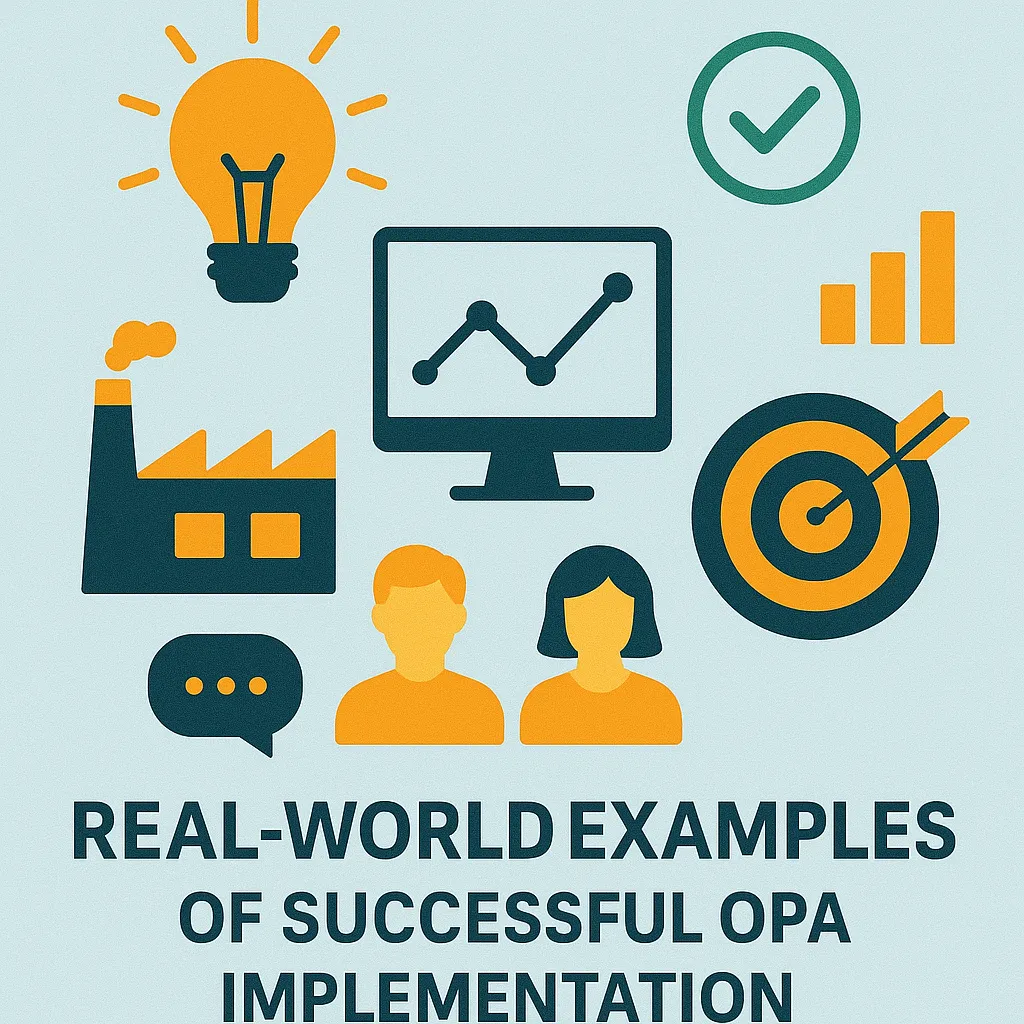Introduction to OPA in Project Management
Organizational Project Management (OPA) refers to the collection of processes, policies, procedures, and knowledge bases that are utilized by an organization to manage its projects effectively. OPAs are integral to project management as they provide a structured framework that guides project teams in their efforts to achieve project goals. These assets can include templates, lessons learned from previous projects, and established methodologies that help streamline project execution and enhance overall performance.
Importance of OPA in Standardizing Project Practices
The significance of OPA in project management cannot be overstated. By standardizing project practices, OPAs ensure that all team members are aligned with the organization’s goals and methodologies. This standardization leads to:
- Consistency: With established processes and templates, project teams can maintain a consistent approach to project management, reducing variability and increasing predictability in project outcomes.
- Efficiency: Standardized practices allow for quicker onboarding of team members and reduce the time spent on planning and documentation, enabling teams to focus on execution and delivery.
- Quality Control: By adhering to established guidelines and best practices, organizations can improve the quality of their project outputs, leading to higher customer satisfaction and better project results.
Benefits of Successful OPA Implementation
Implementing OPAs successfully can yield numerous benefits for organizations, including:
- Enhanced Performance: Organizations that leverage OPAs often experience improved project performance metrics, such as on-time delivery, budget adherence, and stakeholder satisfaction. This is largely due to the availability of historical data and lessons learned that inform better decision-making in current projects [2][10].
- Knowledge Retention: OPAs serve as repositories of knowledge, capturing valuable insights from past projects. This knowledge retention helps organizations avoid repeating mistakes and fosters a culture of continuous improvement [1][4].
- Increased Collaboration: A well-defined OPA framework encourages collaboration among project teams by providing a common language and set of expectations. This collaborative environment can lead to innovative solutions and improved team dynamics [13].
Case Study 1: OPA in a Technology Company
In the fast-paced world of technology, project management can often be a daunting task. A leading technology company faced significant challenges in delivering projects on time and within budget. This case study explores how the implementation of Organizational Process Assets (OPA) transformed their project delivery process, leading to remarkable improvements in efficiency and collaboration.
Initial Challenges
The technology company encountered several hurdles that hindered their project management effectiveness:
- Inconsistent Processes: Different teams followed varied project management methodologies, leading to confusion and inefficiencies.
- Lack of Documentation: There was insufficient documentation of past projects, making it difficult to learn from previous experiences and apply best practices.
- Communication Gaps: Teams often worked in silos, resulting in poor collaboration and a lack of shared understanding of project goals and timelines.
These challenges not only delayed project timelines but also increased costs and reduced overall team morale.
Steps Taken to Implement OPA
To address these issues, the company embarked on a comprehensive OPA implementation strategy, which included the following steps:
- Assessment of Current Processes: The first step involved a thorough assessment of existing project management practices to identify gaps and areas for improvement.
- Standardization of Processes: The company developed standardized templates and guidelines for project management, ensuring that all teams followed a consistent approach. This included creating a centralized repository for project documentation.
- Training and Development: A series of training sessions were conducted to educate team members on the new processes and the importance of utilizing OPAs. This training emphasized the value of documentation and collaboration.
- Integration of Tools: The company adopted software tools that facilitated the use of OPAs, such as project management software that integrated templates and historical data for easy access.
- Continuous Improvement: A feedback loop was established to continuously refine the OPA based on team input and project outcomes, ensuring that the assets remained relevant and effective.
Outcomes and Improvements
The implementation of OPA yielded significant improvements in the company’s project delivery:
- Enhanced Efficiency: With standardized processes and readily available templates, project teams were able to complete tasks more quickly and with fewer errors. This led to a noticeable reduction in project delivery times.
- Improved Team Collaboration: The centralized documentation and clear guidelines fostered better communication among teams. Project members were more aligned on goals and expectations, which enhanced teamwork and reduced misunderstandings.
- Increased Project Success Rates: The company reported a higher percentage of projects being completed on time and within budget. The use of historical data from past projects allowed teams to make informed decisions, further contributing to project success.
- Boosted Morale: As teams experienced the benefits of improved processes and successful project outcomes, overall morale increased. Team members felt more empowered and engaged in their work.
Case Study 2: OPA in the Construction Sector
Particularly within the construction sector, the implementation of Organizational Process Assets (OPAs) can significantly enhance project outcomes. This case study explores a large-scale infrastructure project that exemplifies the effective use of OPAs, showcasing their impact on project management.
Project Overview
The construction project in focus involved the development of a multi-million dollar transportation hub designed to improve regional connectivity. Given its scale and complexity, the project faced numerous challenges, including tight deadlines, budget constraints, and the need for coordination among various stakeholders. The project management team recognized the necessity of leveraging OPAs to navigate these challenges effectively.
OPA Strategies Adopted
To address the complexities of the project, the team implemented several OPA strategies:
- Risk Management Frameworks: A comprehensive risk management framework was established, which included identifying potential risks, assessing their impact, and developing mitigation strategies. This proactive approach allowed the team to anticipate issues before they arose, minimizing disruptions during the construction phase. The framework was regularly updated based on lessons learned from previous projects, ensuring continuous improvement in risk management practices [9][10].
- Communication Protocols: Effective communication was prioritized through the establishment of clear protocols. Regular meetings were scheduled to facilitate information sharing among team members, contractors, and stakeholders. This ensured that everyone was aligned on project goals and progress, reducing misunderstandings and enhancing collaboration [10][12].
- Documentation and Templates: The project utilized standardized templates for reporting and documentation, which streamlined processes and ensured consistency across various project phases. This included compliance checklists and project status reports that were easily accessible to all team members, fostering transparency and accountability [9][11].
Results Achieved
The implementation of OPAs in this construction project yielded significant results:
- Cost Savings: By effectively managing risks and enhancing communication, the project team was able to avoid costly delays and rework. The proactive identification of potential issues led to a reduction in unexpected expenses, ultimately saving the project approximately 15% of its initial budget [10][14].
- Time Efficiencies: The structured approach to project management facilitated by OPAs resulted in a more streamlined workflow. The project was completed two months ahead of schedule, allowing for earlier operational readiness and the ability to capitalize on market opportunities [10][12].
Case Study 3: OPA in Healthcare Projects
In the healthcare sector, the implementation of Organizational Process Assets (OPA) has proven to be transformative, particularly in addressing the unique challenges faced by healthcare projects. This case study explores a specific healthcare project that successfully integrated OPA methodologies, showcasing the impact on project management practices.
Healthcare Project Context and Challenges
Healthcare projects often operate in a complex environment characterized by:
- Regulatory Compliance: Adhering to stringent healthcare regulations and standards is paramount, which can complicate project timelines and resource allocation.
- Stakeholder Diversity: Projects involve a wide range of stakeholders, including healthcare providers, patients, regulatory bodies, and technology vendors, each with distinct needs and expectations.
- Resource Constraints: Limited budgets and personnel can hinder the ability to implement comprehensive project plans effectively.
In one notable project, the National Health Service (NHS) Highland aimed to enhance outpatient services through the implementation of video consultations. The project faced challenges such as ensuring patient engagement, maintaining compliance with health regulations, and integrating new technologies into existing systems [1][5].
OPA Methodologies Implemented
To address these challenges, the project team employed several OPA methodologies, focusing on:
- Stakeholder Engagement: The team actively involved stakeholders throughout the project lifecycle. This included conducting workshops and feedback sessions to gather insights from healthcare providers and patients, ensuring that the video consultation system met their needs and expectations.
- Compliance Frameworks: A robust compliance framework was established to navigate the regulatory landscape. This involved regular audits and updates to ensure that the project adhered to healthcare standards, thereby minimizing risks associated with non-compliance [4][5].
These methodologies not only facilitated smoother project execution but also fostered a culture of collaboration among stakeholders, which is crucial in the healthcare sector.
Success Metrics
The success of the OPA implementation in this healthcare project can be evaluated through several key metrics:
- Improved Patient Outcomes: The introduction of video consultations led to increased patient satisfaction and engagement. Patients reported feeling more connected to their healthcare providers, which contributed to better health management and outcomes.
- Enhanced Project Timelines: By leveraging OPA methodologies, the project team was able to streamline processes, resulting in a significant reduction in project delays. The efficient stakeholder engagement and compliance measures allowed for quicker decision-making and implementation [3][5].
Lessons Learned from OPA Implementations
Organizational Process Assets (OPAs) play a pivotal role in enhancing project success. By examining real-world case studies of OPA implementations, we can distill valuable lessons that project managers and students can apply in their practices. Here are some key takeaways:
Common Factors Contributing to Successful OPA Implementations
- Integration of Historical Data: Successful projects often leverage historical information from previous projects, including successes and failures. This data provides insights that inform planning and decision-making, allowing teams to avoid past mistakes and replicate successes [12][14].
- Structured Documentation: Effective OPAs are not just collections of documents; they are well-organized repositories that include templates, methodologies, and lessons learned. This structured approach ensures that project teams can easily access relevant information when needed, facilitating smoother project execution [13][15].
- Utilization of Lessons Learned: Projects that actively capture and apply lessons learned from past experiences tend to perform better. These insights help in refining processes and improving overall project outcomes, making them a critical component of OPAs [10][14].
Importance of Leadership Support and Stakeholder Involvement
- Leadership Commitment: Strong support from leadership is essential for the successful implementation of OPAs. Leaders who prioritize the use of OPAs signal their importance to the entire organization, fostering a culture that values continuous improvement and knowledge sharing [11][13].
- Engagement of Stakeholders: Involving stakeholders throughout the project lifecycle enhances the effectiveness of OPAs. Their insights and feedback can help refine processes and ensure that the OPAs are aligned with the needs of the project and the organization [11][12].
Need for Continuous Improvement and Adaptability
- Dynamic Nature of OPAs: OPAs should be viewed as living documents that evolve with the organization. Continuous updates and improvements based on new insights and changing project environments are crucial for maintaining their relevance and effectiveness [11][15].
- Adaptability in Practices: Project managers must be willing to adapt their practices based on the lessons learned from previous projects. This flexibility allows teams to respond to challenges more effectively and enhances the overall success of future projects [3][11].
Conclusion
Organizational Process Assets (OPA) have emerged as invaluable tools that can significantly enhance project outcomes. The case studies showcased throughout this blog section illustrate how various organizations have successfully implemented OPA to streamline their processes, improve efficiency, and ensure compliance with established standards. These real-world examples serve as a testament to the effectiveness of OPA in guiding project managers through the complexities of project execution.
Key insights from these case studies highlight the following:
- Value of OPA: The integration of OPAs into project management practices not only facilitates better decision-making but also leverages the collective knowledge and experience of an organization. This can lead to improved risk mitigation and overall project success, as evidenced by the various examples discussed [3][12][13].
- Learning from Case Studies: Project managers and students are encouraged to draw inspiration from the successful implementations of OPA presented in this blog. By analyzing these examples, they can identify best practices and strategies that can be adapted to their own projects, ultimately enhancing their project management skills and outcomes [10][11].
- Resources for Further Learning: To deepen your understanding of OPA and its applications, consider exploring additional resources such as project management textbooks, online courses, and industry webinars. Engaging with these materials can provide further insights into how OPAs can be effectively utilized in diverse project environments [1][15].
In conclusion, embracing OPA in project management practices can lead to significant improvements in project execution and delivery. By learning from the successes of others and continuously seeking knowledge, project managers and students can position themselves for greater success in their future endeavors.
Find out more about Shaun Stoltz https://www.shaunstoltz.com/about/.
This post was written by an AI and reviewed/edited by a human.



